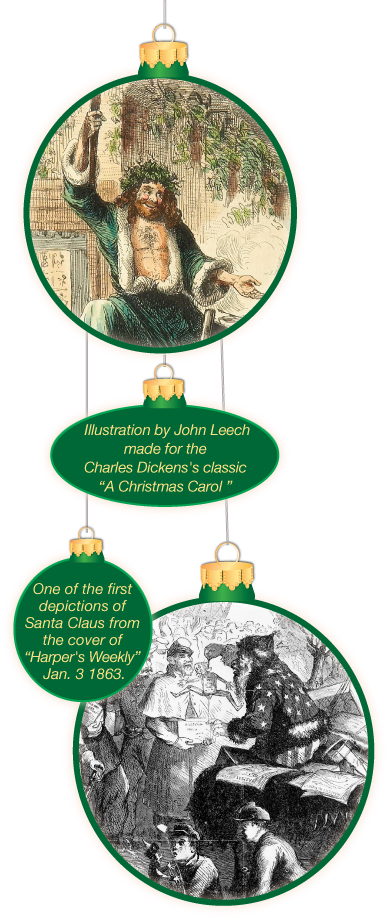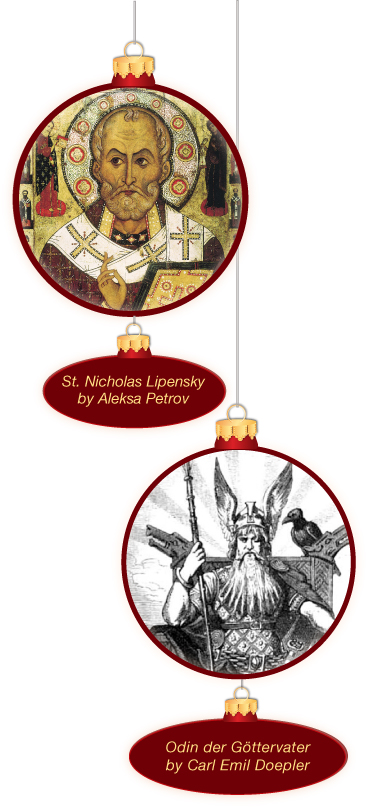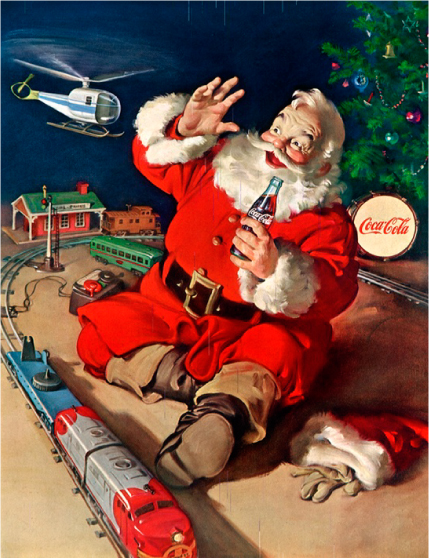by Samantha Gold
One of children’s fondest thoughts about Christmas is about a jolly old man with a white beard and red suit, gliding in the Christmas air with his magical reindeer, bringing gifts to children who have been nice the whole year. Children would be filled with excitement about what Santa Claus will bring for them and even adults are secretly reminded of their own childhood wishes.
Yet, how much of Santa Claus or St. Nicholas is true? Did the man that inspired the legend really exist? How has he become so popular, transcending different cultures and generations? How did various aspects of his personality evolve to what we know today? Will the legend and the story last for a long time to come?
The modern day St. Nicholas that we see today is already the result of historical, mythical and folk stories combined. However, historical studies trace the main inspiration of St. Nicholas back to the fourth century of the Common Era, and a place near Myra in modern-day Turkey.
During the time, stories about the kindness of a man named Nicholas have spread in the countryside. He was generally known as a very rich man who is very kind to children, often throwing toys and candies in their windows. He was also said to have given away all his inheritance to the poor and the sick. Perhaps, one of the most famous stories about him was his kindness in paying for the dowry of three little girls, so they can be saved from prostitution.
St. Nicholas lived a life devoted to Christianity. As stories of his deeds spread throughout Europe, some elements of European folklore merged with earlier accounts about the saint. In fact, there are a number of parallelisms between St. Nicholas and Odin, a deity for Germanic people prior to their Christianization. Odin was depicted in thirteenth-century literature as riding an eight-legged horse that could leap through huge distances. This is pretty similar to the idea of Santa Claus gliding in the air with his flying reindeer.
The hanging of stockings in chimneys or Christmas trees may also be traced to the legend of Odin. According to tradition, children would fill their boots with food for Odin’s flying horse. In return, Odin would give the children candies and other gifts.
Dutch folklore may have also contributed to the overall picture of present-day Santa and gift giving. In the Netherlands before the sixteenth century, he was portrayed as having aides that would carry the list of children, categorizing them as naughty and nice. His aides were known as “Black Peter” and would ride with Santa in Christmas Eve, dropping Christmas gifts and candies through the chimneys of good children while carrying bags and willow canes for catching the naughty ones.
 Britain’s Father Christmas, a jolly, bearded man portrayed in the seventeenth century as magically spreading the merry spirit of Christmas, completes the picture of Santa Claus. Here, St. Nicholas is not just a gift giver with a magical ride; his magic extends into changing the mood of the people, making them happy just in time for Christmas.
Britain’s Father Christmas, a jolly, bearded man portrayed in the seventeenth century as magically spreading the merry spirit of Christmas, completes the picture of Santa Claus. Here, St. Nicholas is not just a gift giver with a magical ride; his magic extends into changing the mood of the people, making them happy just in time for Christmas.
The American version of Santa Claus is a combination of the elements mentioned, gradually formed when settlers arrived in New York back in the 17th century.
Popular author Washington Irving was credited for giving the first detailed description of the European version of Santa Claus. Irving described Santa as simply arriving in a horseback, without his magical reindeer and other elements.
In 1823, a poet named Clark Clement Moore provided more details of what soon became the Americanized version of Santa Claus. In his poem, The Night Before Christmas, Moore named Santa’s reindeer and described his laughs and winks.
The story that Santa comes from the North Pole, where Christmas gifts are made, is attributed to a man named Thomas Nast. Nast was an illustrator for Harper’s magazine who draw images of the jolly old saint in the magazine’s Christmas issues back in the 1860s.
Interestingly, even a cola company contributed to our image of Santa Claus today. The company released human-sized Santas, instead of an elf in Moore’s poem, and popularized his famous red suit.
As we look back and dig deep to the evolution of the images and stories of Saint Nicholas, it is amazing how various elements of society and history come together to keep the legend alive. In years to come, certain aspects of the legend may disappear to suit with the changing times.
One thing seemed timeless, though: that of a man who devotes his life in helping others, in sharing his God-given gifts for the good and happiness of mankind. That is a beauty that we should all be reminded about, especially during Christmas time.




Pingback: Maillot Olympique De Marseille